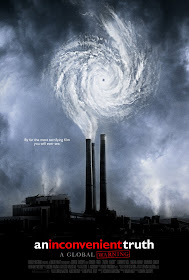How is this guy, Tony Abbott, he who should never walk into a wind tunnel?
The story so far is that Tony Abbott wants to avoid regulating the food industry advertising their goodies to children and has come up with a proposal to supposedly address the grotesque childhood obesity figures Australia sees in the national mirror. He is happy for them to keep advertising to kids but wants to 'force' advertisers to prominently display percentage of the recommended daily intake of their product on their packaging. Source: :::[SMH]
Good job Tony. You are the Australian federal Health Minister; in today's upside down world your new job is not to protect the health of Australians from predatory food practices like pushing carbohydrate tolerance by calorie cramming or Little MacAthletics sponsorship programmes. Your job is to protect fast food, advertising and media companies and their constituent shareholders from skinny returns.
And like a mad monk of mammon you seem to have perfected the bald-faced lie to protect these profits:
The minister, who has refused to ban the advertising of food during children's television viewing hours, said that Sweden and Quebec had had bans for more than a decade "with no discernible impact on childhood obesity".
It does not take much research to check that Quebec has the lowest childhood obesity rates in Canada; a recent study by the Canadian Institute for Health Information (CIHI) has determined an unholy correlation between hip and knee replacements and obesity:
Source: :::[CNW Group]The provincial rates for obesity are generally in alignment with varying rates for joint replacement surgery. The provinces that reported the highest rates for hip replacements (Saskatchewan and Alberta) and for knee replacements (Manitoba and Nova Scotia) also have reported obesity rates that are higher than the national average of 23%. Mirroring the same relationship between BMI and joint replacement surgery, British Columbia and Quebec consistently had among the lowest rates for both surgeries and similarly have reported obesity rates that are lower than the national average.
That's because the kneebone is connected to the hip bone and the hip bone is connected to the tummy bone. A July, 2005 study confirms that childhood obesity in Quebec is well below national levels:
Source: :::[Statistique Canada]In 2004, the combined overweight/obesity rate of young people aged 2 to 17 was significantly above the national level in Newfoundland and Labrador, New Brunswick, Nova Scotia and Manitoba. The combined rate was significantly below the national level in Quebec and Alberta
Tony never had a childhood and doesn't have children. It's the only explanation for his seemingly blatant lie about his purported children's television food advertising restriction not working in Sweden:
Source: :::[Swedish National Institute of Public Health]11.2% of the girls and 14.5% of the boys were found to be overweight, and 3.3% of girls and 3.7% of boys were obese.
In Australia the proportion of overweight and obese children is 21% for boys and 23% for girls. With those jumbo ears Tony Abbott has, he needs a growing nose as much as our children need growing waists. Ok, I needn't be so harsh, I have checked my facts and he indeed does have children, but at least I do minimal fact checking; it seems Tony doesn't, or he does and is a liar. As it is rumoured he once wanted to be pope I am giving him the benefit of the doubt.
Not that I am against his basic concept for food packaging RDI labeling. Who could be? But it is no substitute to not creating the demand for excessive calories in the first place. Children get their calorie requirement messages from their bodies and it's worked fine for us throughout evolution. They don't need these naturally regulated messages overridden by increasingly sophisticated television advertising. Three other things strike me about the clear RDI labeling proposal if you are targeting children in the hope that they can control their calorie intake:
- once the Mars Bar is in the kid's hand it seems a measure too late to put a warming on the package - wouldn't banning Mars from advertising to children in the first place be smarter?
- you are going to need a RDI for each age-group, from tots to tweens to teens and twenty-somethings. Is this a plot to upsize products to accommodate a table on the label?
- you hope the kid can read at minimum, then understand the concepts of recommended daily intake, body mass index, so have basic biological and nutritional knowledge as well as the ability to calculate the accumulated daily intake adjusted to the child's age group.
How many of us adults can do that? It's much easier to teach your children that if the food that has no packaging it is far more likely to be healthier for them. And
their children when they have them, because the carbon footprint of unprocessed and unpackaged foodstuffs is minimised.
 global+warming, activism, greenhouse+effect, children's+nutrition, childhood+obesity, packaging, food, organic+food, diet, health, sustainability
global+warming, activism, greenhouse+effect, children's+nutrition, childhood+obesity, packaging, food, organic+food, diet, health, sustainability



